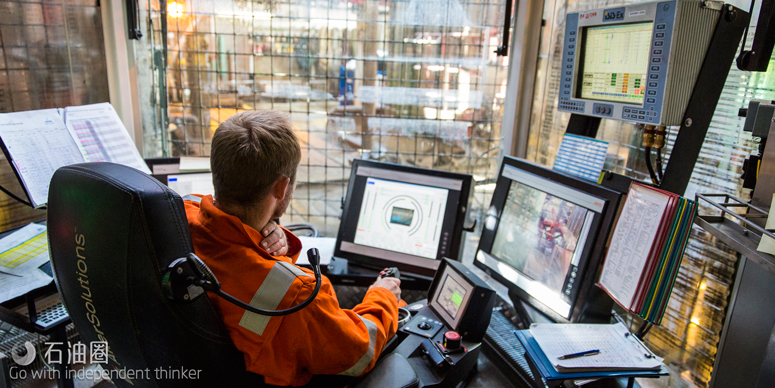Between 2014 and 2016, in response to the oil price collapse, the industry shed some 440,000 jobs worldwide, of which 100,000 oil jobs were lost in Texas alone. As prices recover to around half their peak, former employees are seeking re-engagement, although many are likely to be disappointed. There are several reasons for this, among which are the adoption of cost cutting, efficiency savings and advanced technology. These have combined to reduce the need for lower-skilled labor in favor of fewer but highly skilled people with information technology and computer skills. Automation is fundamentally changing the nature of the industry, as Donald McLain, chairman of the industrial-programs department at Victoria College in south Texas explains: “it used to be you had a toolbox full of wrenches and tubing benders. Now your main tool is a laptop.”
Pipe laying in the Gulf of Mexico
The recent introduction of the “Iron Roughneck,” made by National Oilwell Varco Inc., automates the repetitive and dangerous task of connecting hundreds of sections of drill pipe as they are pushed through ocean water and oil-bearing rock into the well hole. This robot increases crew and rig safety, reduces pipe-handling time and saves rig floor space. In essence the robot is versatile, safe and cost-effective alternative to human roustabouts using muscle to connect pipes.
Drilling dig deeper and faster
Schlumberger, the world’s largest energy services company is working on its “Rig of the Future,” which will drill more holes and deeper horizontal wells from a single location—promising a giant leap in well drilling productivity. The first of Schlumberger’s new prototype rigs are destined for West Texas’s shale fields and the oil rich Permian Basin. Schlumberger’s Chief Executive, Paal Kibsgaard expects that the new rig design will be able to access greater depths of directional drilling and access more oil reservoirs from single locations. Another innovation comes from Texas- based Nabors Industries, which has introduced an automated robot, the iRacker, which lifts long pieces of pipe from racks, connects them together and forces them through extant drilled holes to build wells. Nabors currently operates the largest land drilling rig fleet in the world with approximately 500 rigs working in more than 25 countries.
The impact of advances in automation technology extends well beyond the wellhead. For a start, an engineer can design an oil well from the comfort of his or her office using the latest in well engineering CAD Technology, which enables the creation of 3-D modeling designs. Instructions for assembly of components and parts for building the well can be sent directly to the well supervisor. There are also remote sensing and monitoring technologies, which allow real-time monitoring of developments at a distant oil rig through a laptop or phone from any location. This saves on the need to send staff to visually inspect distant facilities. Remote monitoring technologies are already in use in deepwater drilling in the North Sea and the Gulf of Mexico.
Also at sea, Norwegian company Statoil, Kongsberg Maritime of the University of Science & Technology (NTNU) and Inventas are jointly developing a range of autonomous underwater vehicles. One product is the swimming snake-like robot equipped with thrusters called Eelume. It is designed for autonomous subsea inspection and light intervention. The mechanical creature’s body is a self-contained manipulative arm that can swim on its own without being attached to a bulky remotely operated vehicle “body.” Unlike other remotely operated vehicles, the Eelume can be permanently based at a docking station on the seabed and, in various modular combinations, it can carry out an extensive range of subsea inspections and interventions. This technology improves safety and reduces costs by reducing the need for human divers to be sent into the deep for routine and ad hoc visual inspection, maintenance, cleaning and adjusting valves and chokes of underwater infrastructure. Bjørn Jalving, Executive Vice President, Kongsberg Maritime states that the Eelume “is a new tool that will enable operators to realize large-scale cost savings by introducing new ways of conducting routine tasks and helping prevent unscheduled shutdowns by reacting instantly when required.”
New roles for crews
Investment in automation is bringing increased efficiency, improved safety and lower operating costs, allowing the industry to produce oil at these low prices and, in many cases, maintain dividends and service debts. Already, industry experts suggest that the number of rig workers has been reduced from 25 to 15, a number which is expected to fall to just five with greater automation. According to Roustabout, Mark Rodgers, “even though modern technology is great, you can’t eliminate the person.” He adds, “To make sure it never fails, you’ve got to have somebody there watching it, to verify it.” Automation and robots are replacing muscle. Increasingly the industry’s human resources are having to multi-task and closely interact with sophisticated technology.


 石油圈
石油圈

